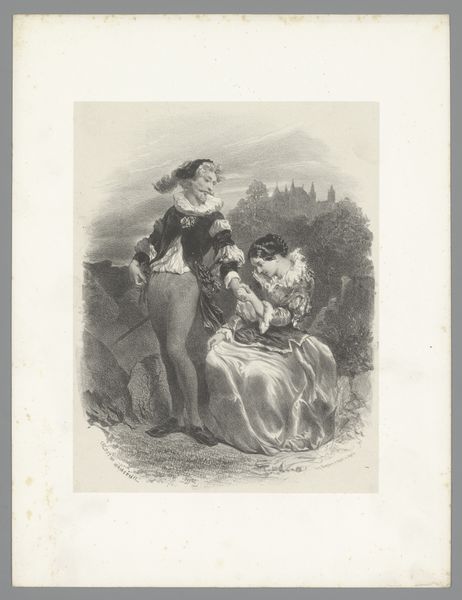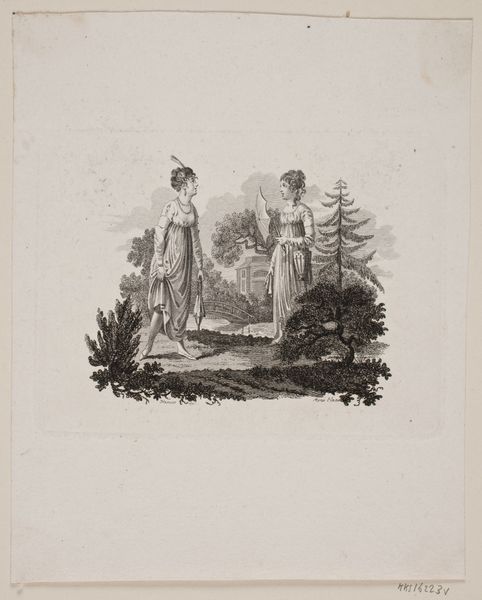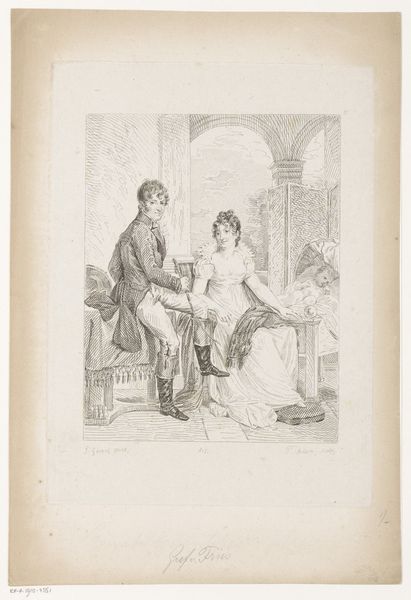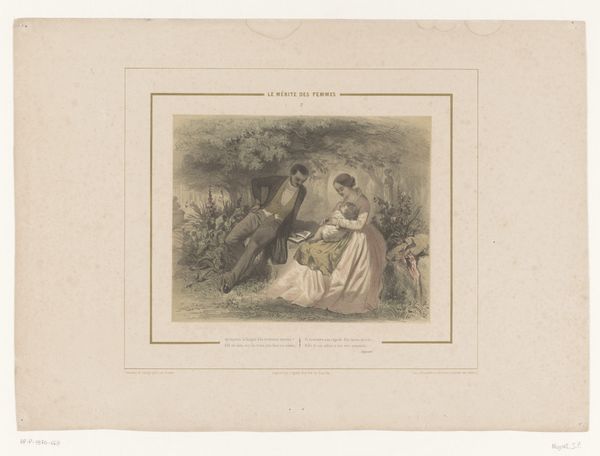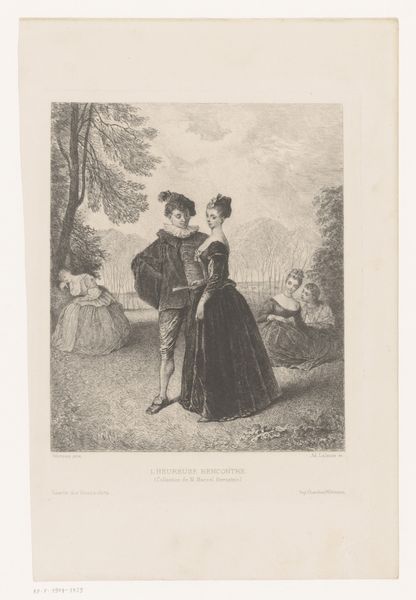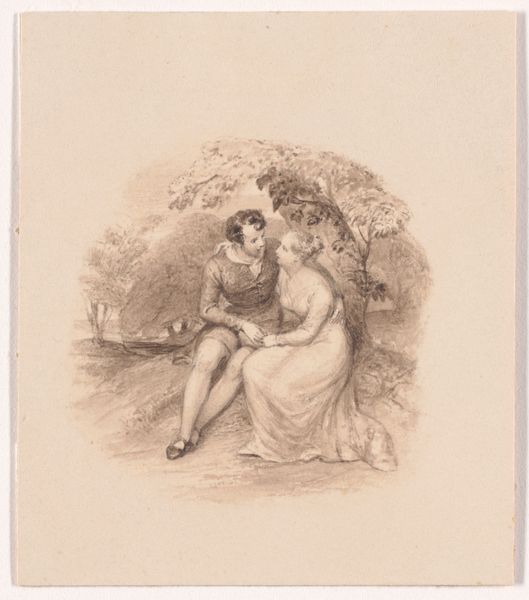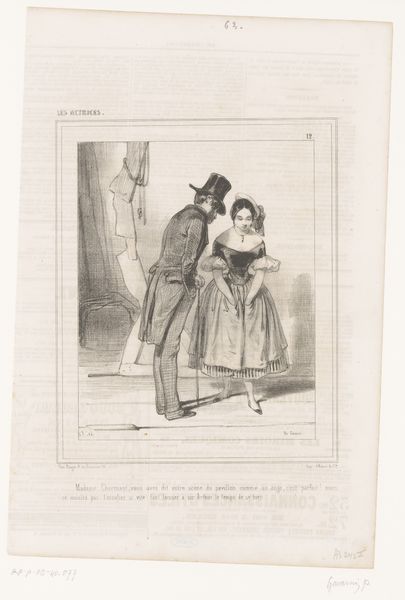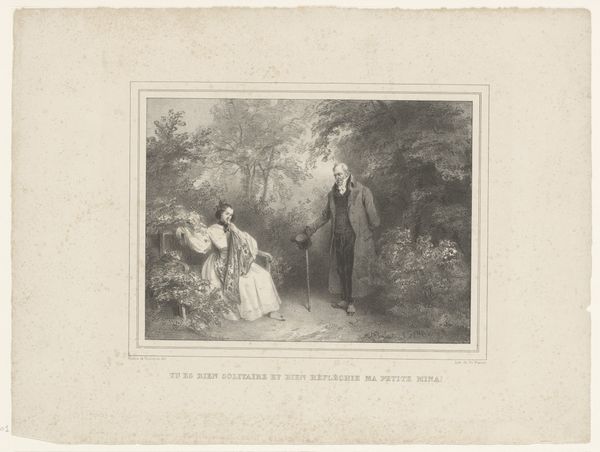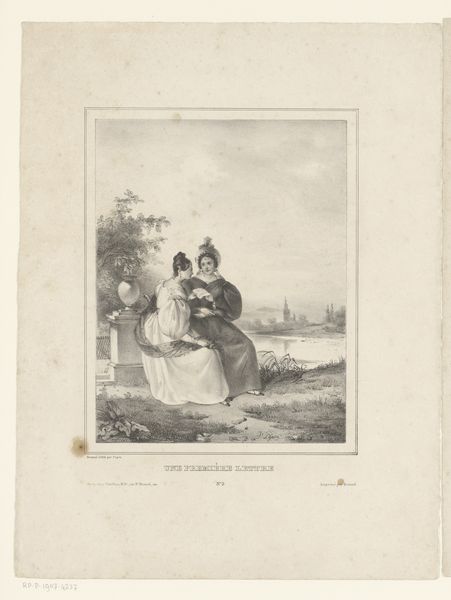
Dimensions: height 286 mm, width 380 mm
Copyright: Rijks Museum: Open Domain
Alexander Ver Huell created this artwork, "Vrouw prikt bloem op mans jas," using graphite. The composition immediately draws your eye to the central figures, framed against the backdrop of a distant estate. There's a delicate balance between light and shadow, created by the graphite, that softens the details and evokes a mood of gentle intimacy. Notice how Ver Huell uses line and form to define the characters, setting them in contrast with the soft, airy background. Here, the act of a woman pinning a flower on a man's jacket isn't just a charming gesture, it's a carefully constructed moment. What does this scene tell us about 19th-century social values and gender roles? How is the woman both central and subservient within the composition, reflecting conventional ideas about relationships? The artist seems to be using a semiotic system of signs to explore ideas about love, status, and the natural world. In this system, the flower, the house and the characters act as cultural codes, which destabilize fixed meanings, opening a new window of interpretation.
Comments
No comments
Be the first to comment and join the conversation on the ultimate creative platform.
